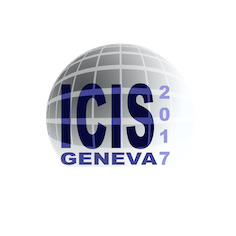Speaker
Description
The vacuum arc ion source VARIS, based on the MEVVA IV (MEtal Vapor Vacuum Arc) ion source, has been developed at GSI in 2004 especially for production of high current $^{238}$U$^{4+}$ ion beams for synchrotron operation. Compared to the MEVVA IV ion source the VARIS has a number of improved characteristics: higher emission current density, better vacuum conditions, better pulse-to-pulse stability, reduced intensity fluctuations during the beam pulse, higher fraction of fourfold uranium ions in the plasma, reduced power consumption and therefore higher efficiency.
For the last few years the development of the VARIS was concentrated on several aspects. One of them was the production of high current ion beams of heavy metals such as Au, Pb and Bi. Particular difficulties with these elements are caused by their physical properties, these are soft and fusible metals with relatively low melting point and high vapour pressure at operating temperature. This makes the production of fourfold ions (injection requirements into the radio frequency quadrupole RFQ) in a vacuum arc generated plasma quite challenging. However, the solution is found. The situation can be dramatically improved by using the composite materials or alloys with enhanced physical properties for the cathodes.
Another aspect is an increasing of the beam brilliance for intense U$^{4+}$ beam by optimization the geometry of the electrodes in the extraction system. A new 7-holes triode extraction system allows an increase of the extraction voltage from 30 kV to 40 kV and reduces at the same time the outer aperture of the extracted ion beam. Thus, the record beam brilliance for U$^{4+}$ beam in front of the RFQ has been achieved, exceeding the RFQ space charge limit for ion current of 15 mA.
Several new projectiles in middle-heavy region have been successfully developed from VARIS ion source to fulfill the requirements of the future FAIR (Facility for Antiproton and Ion Research) research programs. Influence of an auxiliary gas on the production performance of certain ion charge states as well as on operation stability has been investigated. Optimization of the ion source parameters for a maximum production efficiency and highest particle current in front of the RFQ has been performed.
The next important aspect of the development will be the increasing the operation duty cycle of VARIS ion source for all elements especially for uranium to 2.7 Hz in order to provide the maximum availability of high current ion beams for future FAIR experiments. The possible strategy to reach this goal is discussed.
